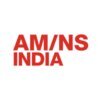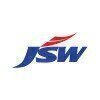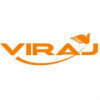Filter interviews by
Jindal Stainless Executive Engineer Interview Questions, Process, and Tips
Jindal Stainless Executive Engineer Interview Experiences
8 interviews found
I applied via JSL's own Job portal. and was interviewed in Apr 2024. There was 1 interview round.
(12 Questions)
- Q1. What is Pipe Layout.
- Ans.
Pipe layout refers to the arrangement and positioning of pipes in a system to ensure efficient flow of fluids or gases.
Pipe layout involves determining the route, size, and elevation of pipes within a system.
Consideration must be given to factors such as pressure drop, flow rate, and accessibility for maintenance.
Proper pipe layout can optimize system performance and minimize potential issues such as leaks or blockages
- Q2. Why Position Displacement Pumps are used for Hydraulic.
- Ans.
Position displacement pumps are used for hydraulic systems due to their ability to provide precise control over fluid flow and pressure.
Position displacement pumps offer accurate and repeatable flow rates, making them ideal for applications requiring precise control.
These pumps are capable of maintaining constant pressure, which is crucial in hydraulic systems to ensure consistent performance.
Position displacement pump...
- Q3. Brief about pipe scheduled.
- Ans.
Pipe schedule refers to the wall thickness of pipes used in various industries.
Pipe schedule is a way to standardize the thickness of pipes for different applications.
It is denoted by a number followed by 'S' (e.g. Schedule 40, Schedule 80).
Higher schedule numbers indicate thicker walls for higher pressure applications.
Pipe schedules are important for ensuring compatibility and safety in piping systems.
- Q4. Procedure of Replacement of Pump in a Hydraulic System.
- Ans.
The procedure for replacing a pump in a hydraulic system involves draining the system, disconnecting the old pump, installing the new pump, and refilling the system.
Drain the hydraulic system to prevent spills and contamination.
Disconnect the old pump from the system by removing any connecting hoses or pipes.
Install the new pump in the same location as the old pump, ensuring proper alignment and connection.
Refill the h...
- Q5. How System Pressure is set in a Hydraulic system.
- Ans.
System pressure in a hydraulic system is set using a pressure relief valve or a pressure regulator.
System pressure can be set using a pressure relief valve which opens to release excess pressure.
A pressure regulator can also be used to control the pressure by adjusting the setting.
The pressure setting is typically determined based on the requirements of the hydraulic system and the components used.
Monitoring devices su...
- Q6. What is TIG welding and why is it widely used in Jointing Hydraulic Pipes.
- Ans.
TIG welding is a welding process that uses a non-consumable tungsten electrode to produce the weld. It is widely used in jointing hydraulic pipes due to its precision and clean welds.
TIG welding stands for Tungsten Inert Gas welding.
It uses a non-consumable tungsten electrode to create the weld.
TIG welding produces high-quality, clean welds with minimal spatter.
The process allows for precise control over the welding ar...
- Q7. What are the procedures of cleaning pipe lines.
- Ans.
Cleaning pipe lines involves various procedures such as flushing, pigging, and chemical cleaning.
Flushing involves using water or air pressure to remove debris and buildup from the pipes.
Pigging uses a device called a 'pig' to scrape the inside of the pipe and push out any blockages.
Chemical cleaning involves using specific chemicals to dissolve and remove stubborn deposits in the pipes.
Regular maintenance and inspecti...
- Q8. What is NAS value and why its important to achieve with in standard limits.
- Ans.
NAS value is a measure of network-attached storage performance and reliability, important to achieve within standard limits for optimal data storage and access.
NAS value stands for Network-Attached Storage value, which measures the performance and reliability of a storage system.
It is important to achieve NAS value within standard limits to ensure optimal data storage and access speeds.
Exceeding NAS value limits can re...
- Q9. How Conveyor alignment is done.
- Ans.
Conveyor alignment is done by adjusting the idlers and pulleys to ensure the belt runs straight and centered on the conveyor frame.
Check for any misalignment by observing the belt's position on the idlers.
Adjust the idlers and pulleys to ensure the belt runs straight and centered.
Use alignment tools such as laser alignment devices for precision.
Regularly inspect and maintain the conveyor system to prevent misalignment ...
- Q10. What are the factors and its requirements to procure a Conveyor belt.
- Ans.
Factors and requirements for procuring a conveyor belt
Consider the type of material being transported
Determine the required capacity and speed of the conveyor belt
Evaluate the environment where the conveyor belt will be used (e.g. temperature, humidity)
Assess the maintenance and operating costs of the conveyor belt
Check the safety features and regulations compliance of the conveyor belt
Look into the reputation and reli...
- Q11. Types of Coupling uses and the procedure of alignment.
- Ans.
Couplings are used to connect two shafts together while allowing for some degree of misalignment. Alignment is crucial for proper functioning.
Types of couplings include rigid, flexible, fluid, and magnetic couplings.
Procedure for alignment involves checking shaft alignment using tools like dial indicators, laser alignment systems, or straightedges.
Alignment process includes adjusting shims, moving machinery, and rechec...
- Q12. What is a Rapid wagon loading system.
- Ans.
A rapid wagon loading system is a technology used to quickly load goods onto train wagons for transportation.
Utilizes automated machinery to load goods efficiently
Reduces loading time significantly compared to manual loading
Commonly used in industries such as mining, agriculture, and logistics
Examples include conveyor belt systems, robotic arms for loading, and automated palletizing systems
I applied via Campus Placement

(7 Questions)
- Q1. What kind of nozzle use for slab cooling in continuous casting process.
- Ans.
Submerged entry nozzles (SEN) are commonly used for slab cooling in continuous casting process.
Submerged entry nozzles (SEN) are designed to deliver cooling water directly to the slab surface.
SEN helps in controlling the solidification process and improving the quality of the slab.
Examples of SEN manufacturers include Vesuvius, TATA Steel, and SMS group.
- Q2. What is internal casting defect in continuous casting.
- Ans.
Internal casting defect in continuous casting refers to flaws or imperfections that occur within the casting material during the casting process.
Internal shrinkage: caused by improper cooling or solidification of the casting material, leading to voids or cavities within the material.
Inclusions: foreign particles or impurities that become trapped within the casting material, affecting its structural integrity.
Segregatio...
- Q3. What types of external defects in continuous casting process?
- Ans.
External defects in continuous casting process include surface cracks, surface blowholes, and surface segregation.
Surface cracks can occur due to improper cooling or excessive casting speed.
Surface blowholes are caused by trapped gases in the molten metal.
Surface segregation results from uneven distribution of alloying elements.
Other external defects may include surface scabs and surface laps.
- Q4. What type of casting Machine in Jsl jajpur,
- Ans.
JSL Jajpur uses various types of casting machines including continuous casting machines and vertical casting machines.
JSL Jajpur uses continuous casting machines for producing long, continuous shapes like rods, tubes, and beams.
They also use vertical casting machines for producing solid shapes like ingots and slabs.
Other types of casting machines used at JSL Jajpur may include horizontal casting machines and centrifuga
- Q5. What is miniscus level in continuous casting ?
- Ans.
Miniscus level in continuous casting refers to the level of molten metal in the mold during the casting process.
Miniscus level should be maintained at a specific height to ensure proper solidification of the metal.
Maintaining the miniscus level helps control the flow of metal and prevent defects in the final product.
If the miniscus level is too high, it can lead to overflow and if it is too low, it can cause issues wit...
- Q6. What is the role of cromium in stainless steel making?
- Ans.
Chromium is added to stainless steel to increase its corrosion resistance and strength.
Chromium forms a passive oxide layer on the surface of stainless steel, which prevents rusting and corrosion.
Chromium also improves the hardenability of stainless steel, making it stronger and more durable.
The amount of chromium added to stainless steel can vary, with higher percentages leading to better corrosion resistance.
For exam...
- Q7. What is the role of Nickel in stainless steel making
- Ans.
Nickel is added to stainless steel to improve its corrosion resistance, strength, and durability.
Nickel increases the resistance of stainless steel to corrosion and oxidation
Nickel improves the strength and toughness of stainless steel
Nickel helps maintain the austenitic structure of stainless steel at high temperatures
Nickel is often used in combination with other elements like chromium and molybdenum to enhance the p
Interview Preparation Tips
- Steel Making
- Continuous casting
(1 Question)
- Q1. PLC and Drive related questions
Interview Preparation Tips
I applied via Referral and was interviewed before May 2023. There was 1 interview round.
(1 Question)
- Q1. Basic about Converter
Interview Preparation Tips
Jindal Stainless interview questions for designations
I appeared for an interview before Nov 2022.

(1 Question)
- Q1. About my Experience
(1 Question)
- Q1. About my Technical knowledge
(1 Question)
- Q1. About my Experience technical, management
Get interview-ready with Top Jindal Stainless Interview Questions
I applied via Walk-in and was interviewed before Jun 2023. There were 2 interview rounds.
(2 Questions)
- Q1. Technical past experience
- Q2. Past experience
(2 Questions)
- Q1. Past experience
- Q2. No matter where u were , u will be hired for labour position
Interview Preparation Tips
Executive Engineer Jobs at Jindal Stainless
I applied via Walk-in and was interviewed in Nov 2022. There were 3 interview rounds.

(1 Question)
- Q1. Ctc package job location reason of job change
- Ans.
Looking for better growth opportunities and challenging projects in a new location.
Seeking a more challenging role as an Executive Engineer
Desire to work on new projects and expand skill set
Location change for personal reasons
Salary and benefits package is also a factor
(1 Question)
- Q1. About my work job role
Interview Preparation Tips
I applied via Company Website and was interviewed before Jan 2022. There were 2 interview rounds.

(4 Questions)
- Q1. Want to move or not, how motivated you're, why you want to work here?
- Q2. Warning that job is out of comfort how you will manage?
- Q3. What makes you searching for another job, your current job is not good, salary,work profile, culture or what?
- Q4. Do you love challenges in life, if yes then explain an instance in your life that says you do?
Interview Preparation Tips
Top trending discussions






Interview questions from similar companies

Executive Engineer Interview Questions & Answers
Jindal Steel and Powerposted on 6 Jul 2017
I appeared for an interview before Jul 2016.
Interview Questionnaire
1 Question
- Q1. Introduction, company profile,hobby,about your work
Interview Preparation Tips
Experience: after shortlisted of resume call from jindal group
Round: Group Activity
Experience: fulfill form and enjoy.
Round: Test
Experience: passed in exam.
Duration: 30 minutes
Total Questions: 80
Round: Technical + HR Interview
Experience: I'm faces all questions and confidentially answerd

Executive Engineer Interview Questions & Answers
Jindal Steel and Powerposted on 3 May 2019
Interview Questionnaire
1 Question
- Q1. 1- Your Experience 2- Favourite Subject Like in my case i said Fluid Mechanics, so he asked questions on the subject. Types of pumps, NPSH, Bernoullis theorem, barometric head, types of fluid, Cavitation...
Interview Preparation Tips
Experience: When you will go through the JSPL website it will say the following things asked in the test
Aptitude
Reasoning
Technical 40ques 18min.
Psychometric test
But aptitude was not asked only verbal Reasoning.
So basically
80 questions and 60 minutes.
Round: Group Discussion
Experience: Digital India and
Ecological development over Economic development.
Jindal Stainless Interview FAQs
Some of the top questions asked at the Jindal Stainless Executive Engineer interview -
Tell us how to improve this page.
Jindal Stainless Interviews By Designations
- Jindal Stainless Junior Engineer Interview Questions
- Jindal Stainless Associate Manager Interview Questions
- Jindal Stainless Assistant Engineer Interview Questions
- Jindal Stainless Graduate Engineer Trainee (Get) Interview Questions
- Jindal Stainless Executive Engineer Interview Questions
- Jindal Stainless Manager Interview Questions
- Jindal Stainless Technician Interview Questions
- Jindal Stainless Diploma Trainee Engineer Interview Questions
- Show more
Interview Questions for Popular Designations
- Senior Executive Engineer Interview Questions
- Safety Executive Interview Questions
- Electrical Engineer Interview Questions
- Executive Production Interview Questions
- Assistant Executive Engineer Interview Questions
- Quality Executive Interview Questions
- QA QC Engineer Interview Questions
- QA Executive Interview Questions
- Show more
Jindal Stainless Executive Engineer Interview Process
based on 16 interviews
2 Interview rounds
- Resume Shortlist Round
- HR Round
Interview Questions from Similar Companies
Fast track your campus placements
Jindal Stainless Executive Engineer Reviews and Ratings
based on 144 reviews
Rating in categories
|
Junior Engineer
1.2k
salaries
| ₹2.1 L/yr - ₹5.8 L/yr |
|
Associate Manager
1.1k
salaries
| ₹5.3 L/yr - ₹15 L/yr |
|
Executive Engineer
689
salaries
| ₹4 L/yr - ₹11 L/yr |
|
Assistant Engineer
654
salaries
| ₹3.2 L/yr - ₹7 L/yr |
|
Manager
424
salaries
| ₹7.2 L/yr - ₹20.8 L/yr |

Tata Steel

JSW Steel

Jindal Steel and Power

ArcelorMittal Nippon Steel
- Home >
- Interviews >
- Jindal Stainless Interview Questions >
- Jindal Stainless Executive Engineer Interview Questions





















